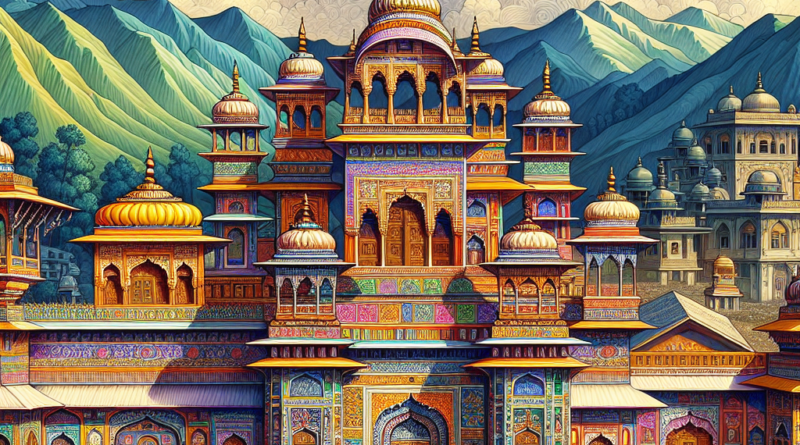Majestic Beauty: Indian Architectural Wonders Revealed
Preserving the Legacy: The Significance of Hindu and Rajput Architecture in Indian Culture
Indian Architectural Wonders Revealed
Indian architecture is a tapestry of diverse styles, reflecting the rich cultural heritage and artistic prowess of its people. Among the myriad architectural marvels that dot the landscape of India, the structures influenced by Hindu and Rajput traditions stand out for their grandeur, symbolism, and spiritual significance. In this article, we delve into the historical context and cultural significance of Hindu and Rajput architecture, exploring its enduring relevance in contemporary times.
Historical Context:
Hindu architecture traces its roots back to ancient times, with the earliest examples found in the rock-cut caves of Ajanta and Ellora. These early structures served as places of worship and meditation, adorned with intricately carved sculptures depicting Hindu deities and mythological scenes. The temple architecture of India reached its zenith during the medieval period, with the construction of magnificent temples such as the Brihadeeswarar Temple in Thanjavur and the Khajuraho Temples in Madhya Pradesh.
Rajput architecture, on the other hand, flourished during the medieval era in the region of Rajasthan. The Rajput rulers, known for their valor and chivalry, built elaborate forts, palaces, and stepwells that showcased their power and grandeur. The forts of Chittorgarh, Jaisalmer, and Amer are prime examples of Rajput architecture, characterized by intricate carvings, colorful frescoes, and strategic military design.
Cultural Significance:
Hindu and Rajput architecture are imbued with deep cultural and spiritual significance, reflecting the beliefs, values, and traditions of the people who built them. Hindu temples are considered sacred spaces where devotees can connect with the divine, seeking blessings and spiritual solace. The architecture of Hindu temples follows strict principles laid out in ancient texts known as Vastu Shastra, which govern everything from the layout of the temple complex to the placement of deities within the sanctum sanctorum.
Rajput architecture, on the other hand, reflects the martial ethos of the Rajput clans, with forts and palaces designed not just for aesthetic appeal but also for defense and strategic advantage. The intricate carvings and elaborate decorations found in Rajput architecture often depict scenes from epic battles, courtly life, and religious ceremonies, serving as a visual chronicle of Rajput history and culture.
Contemporary Relevance: (Indian Architectural Wonders Revealed)
In contemporary times, Hindu and Rajput architecture continues to inspire architects, artists, and historians, serving as a source of inspiration and pride for the Indian people. Many ancient temples and forts have been meticulously preserved and restored, attracting tourists from around the world and generating revenue for local communities. The UNESCO World Heritage sites of Hampi, Khajuraho, and Chittorgarh are testimony to the enduring legacy of Hindu and Rajput architecture.
Indian Architectural Wonders Revealed
Furthermore, the principles of Vastu Shastra continue to influence modern architectural design, with architects incorporating elements of traditional Hindu architecture to create harmonious and spiritually uplifting spaces. The use of intricate carvings, vibrant colors, and traditional motifs in contemporary buildings pays homage to the rich architectural heritage of India, keeping the legacy of Hindu and Rajput architecture alive in the present day.
Conclusion:
Hindu and Rajput architecture stand as testaments to the ingenuity, creativity, and spiritual depth of the Indian civilization. From the majestic temples of South India to the formidable forts of Rajasthan, these architectural wonders continue to captivate and inspire generations of people, serving as reminders of India’s glorious past and cultural richness. By preserving and celebrating these architectural marvels, we honor the legacy of our ancestors and ensure that their timeless beauty and significance endure for generations to come.

